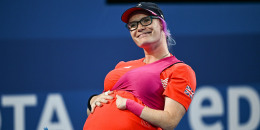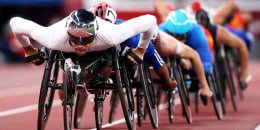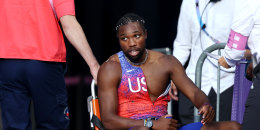When Simone Biles stunningly chose to withdraw from multiple events at the Tokyo Olympics in 2021, critics of her decision often contrasted her with another American gymnastics hero: Kerri Strug.
In the 1996 Olympics in Atlanta, Strug famously performed her second vault with a severely injured left ankle suffered on her previous vault. She stuck the landing, balancing herself on one foot and helping bring home the first team gold medal in history for the U.S. women's gymnastics team.
Biles revisits that moment and how it resurfaced during her own struggles in Tokyo in 2021 in the new Netflix documentary "Simone Biles Rising," the first part of which began streaming on July 17.
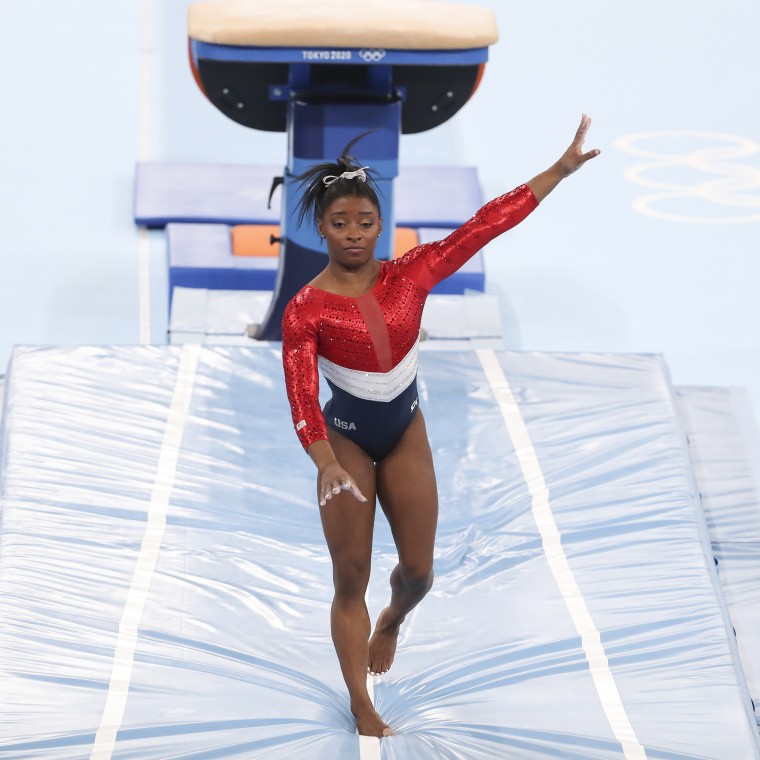
The release of the docuseries comes just days before Biles, 27, gets set to compete for Team USA in the Paris Olympics in a bid to reclaim gold.
Here's what to know.
Why was Simone Biles compared to Kerri Strug?
Biles, the most decorated gymnast of all time and the heavy gold medal favorite in Tokyo, withdrew from competition in 2021 while experiencing the "twisties." The phenomenon occurs when gymnasts lose their sense of where they are while in midair, which could lead to catastrophic injuries by landing improperly.
Biles also spoke about enduring mental health issues at the time.
Her decision sparked criticism about her being a quitter and abandoning her team. She is shown in the docuseries reading critical social media posts from 2021. Video clips of sports talking heads ripping her decision at that time are also shown.
"You can only silence the noise for so long until it gets to you," she says.
Pundits wondered why she couldn't be like Strug and just gut it out.
"I know after Tokyo, that video got brought back up," Biles says in the documentary. "It was like, ‘Why couldn't you be Kerri Strug?' And then a lot of people on the other hand were like, ‘Absolutely not. Kerri should not have even done that back in the day.’
"And maybe if my ankle was fractured, yeah, I would’ve still done it," she continued. "But that wasn’t the case. Where I was, mentally and physically, it could’ve potentially been more than an ankle or something. It could’ve been worse."
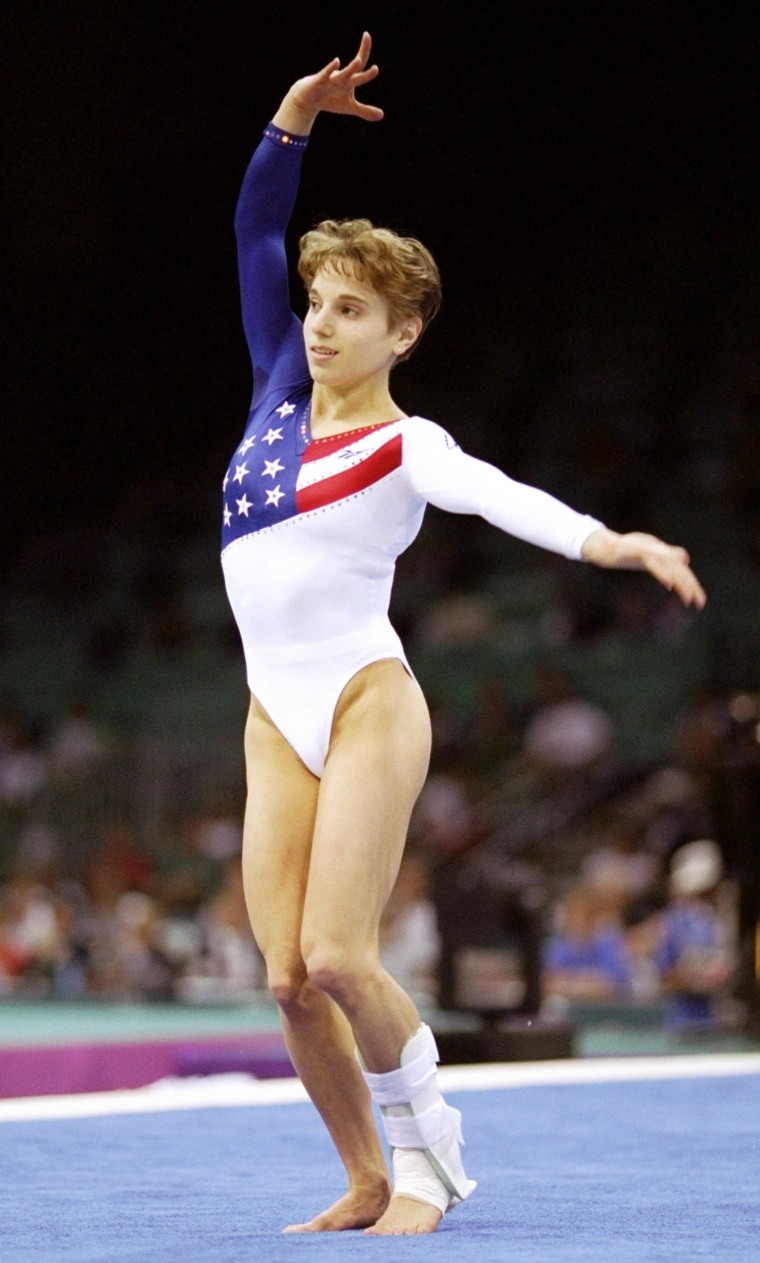
The U.S. won the silver medal in the team competition in Tokyo. Biles finished with a bronze medal in the balance beam after withdrawing from the medal rounds for the all-around, floor exercise, vault and uneven bars.
What has Kerri Strug said about the comparisons to Simone Biles?
Strug, 46, who does not appear in the docuseries, spoke out in support of Biles in 2021 following her decision.
“Sending love to you @Simone_Biles - Team UNITED States of America,” Strug posted on X.
Strug also spoke with the Dayton Daily News in 2023 about her name coming up in contrast to Biles.
“Everybody was comparing the two of us, but they were totally different circumstances,” she said. “Hers was a mental thing, not physical, and they’re not the same. We need to look at each individual and respect their decision. No one knows what another person is experiencing.
“Simone is a phenomenal athlete, an incredible gymnast,” she continued. “I supported whatever she decided. She knew better than anyone what was right for her. She had nothing to prove. Me, I had everything to prove. I was the last competitor. We were going for gold. And back then it was a totally different era.”
How is Kerri Strug's famous Olympic moment viewed today?
In the Netflix docuseries, Biles and others reflect on seeing Strug's performance in a different light years later. Biles called the days of gymnasts performing with serious injuries during the 1980s and '90s "borderline abuse."
Strug was only 18 during her famous Olympic performance. She was told by Team USA coach Bela Karolyi that the team needed her to vault a second time after asking if it was necessary.
It turned out the U.S. would've still won by 0.309 points even if Strug had not taken her famous vault, according to the official Olympics website.
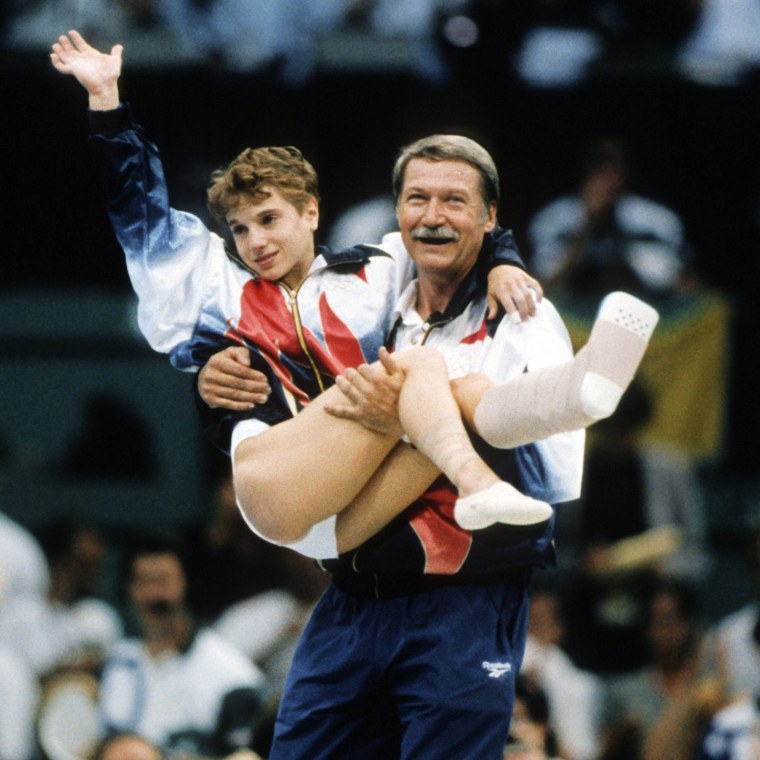
Strug's injury meant sacrificing any chance at individual glory because it left her unable to compete in the all-around, vault and floor exercise despite having qualified for the medal rounds. She never competed in a high-level gymnastics meet again.
"Kerri Strug. Heroic, yes. I think we’ve all seen it, and we’ve all praised her for it," Biles says in the documentary. "But there’s a lot of controversy over it."
Strug's former Olympic gymnastics teammate Dominique Dawes also takes a different view of it.
"In (2021), when Simone stepped back, I think people started to scrutinize and really think about the pressure that is put up on these athletes," Dawes says in the documentary. "And I think the Kerri Strug moment, people started to look at it, and they were like, ‘Is that too much on a young child?’
"We all were injured. We all were beat down and battered. She’s standing at the end of the vault runway, visibly in physical pain, emotional pain as well. Her coaches are telling her she can do it. Like, that would be nerve-wracking as an adult. These are young teenagers that have given up their whole childhood. Nearly 40,000 people screaming for her to go because it’s for your country."
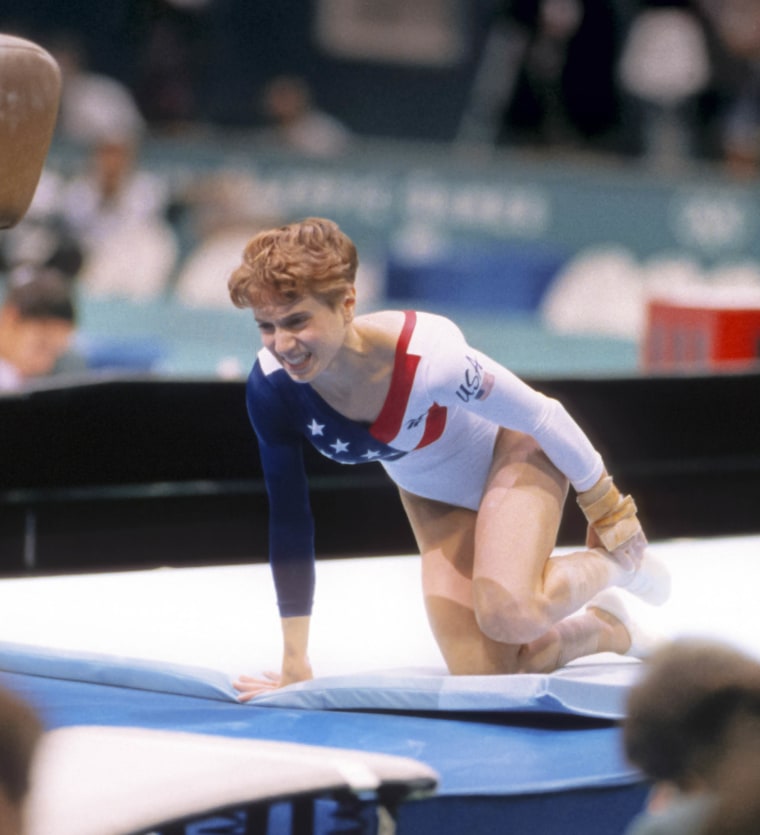
Strug spoke with the Dayton Daily News in 2023 about her decision to go through with the vault.
“I just couldn’t walk away," she said. "If I hadn’t gone for that last vault, it always would have haunted me. It’s fortunate I came through at that moment. I’m very proud that I was able to accomplish such a big thing at such a young age."
Biles can appreciate the moment, but also wonders whether it should've happened in the first place.
"Watching that video — total badass. You go, girl," Biles said. "And I know some of us have even competed on injuries, but I definitely think about it a little differently."
"I think if we look back now we’re like, ‘That was not right,'" Dawes said.
What else does Simone Biles share in Part 1 of the Netflix docuseries?
The behind-the-scenes moments of Biles' wrenching decision to withdraw in Tokyo are shown, including emotional conversations with her mother, Nellie Biles.
She also opens up about her marriage to NFL player Jonathan Owens, and what the aftermath of her Olympic experience in Japan was like.
"After Tokyo, I literally had not one ounce of belief in myself," she said. "You just don’t know if you can do it again. I was like, 'Is this really how my career ends?' That’s tragic."
She also speaks about facing the trauma of her abuse at the hands of former Olympic team doctor Larry Nassar, who is now serving life in prison.
"I didn’t get the proper care before because I just thought I was OK," she said. "But your mind and body is the first one to say, 'Actually, no.'"
